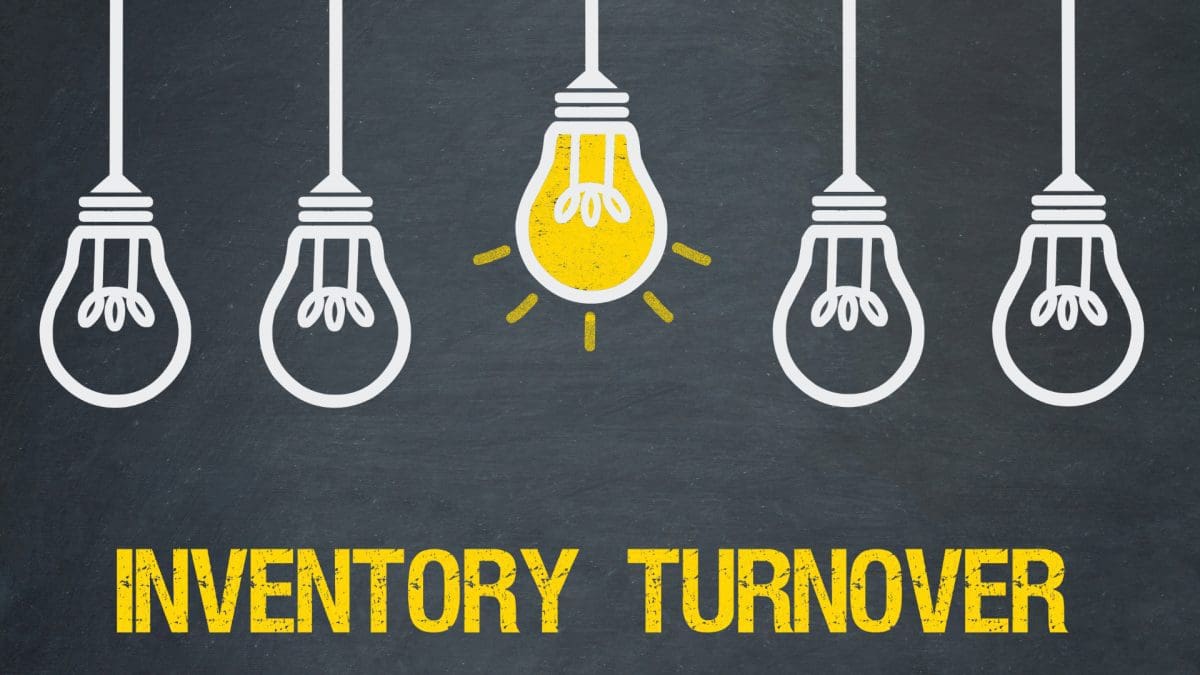
Turning over your inventory at a faster rate means more money in your pocket and a good inventory turnover ratio is the key to making that happen. With that being said, you might be wondering, what is a good inventory turnover ratio? And how much of a toll does it actually take on your business? Keep reading to learn more about this crucial aspect of running your business.
What is an Inventory Turnover Ratio?
The inventory turnover ratio is a key metric for managing and evaluating how well a company is performing. It measures the number of times inventory is sold or used in a period, such as a year. A high ratio implies that a company is swiftly and efficiently selling off its inventory, whereas a low ratio indicates that the company is not selling much or potentially not even enough to cover its costs.
How to Calculate Your Inventory Turnover Rate
There are a few different ways to calculate your inventory turnover ratio. The most typical method is to simply divide your sales by your average inventory.
Average inventory = (beginning inventory + ending inventory) /2
For example, if a company had $50,000 in sales and an average inventory of $25,000, its inventory turnover ratio would be:
$50,000 / $25,000 = 2
That means the company’s inventory was turned over two times during the year. In other words, the company sold off all its inventory two times during the year.
What is a Good Inventory Turnover Ratio?
Now that you know what this ratio is and how to calculate it, you might be wondering what a good turnover ratio looks like.
Generally, a target inventory turnover ratio is often between four and six. This means that your average inventory should turn over four to six times each year.
Of course, there are always exceptions to the rule. For example, if you sell products that have a long shelf life, such as diamonds or pharmaceuticals, then you might have a lower inventory turnover ratio. On the other hand, if you sell fast-moving items, such as clothing or electronics, then your ratio might be higher.
The important thing is to know what a good turnover ratio is for your specific industry so you can gauge how well your business is performing. We recommend doing market research on your specific industry.
Common Mistakes in Calculating This Ratio
One common mistake businesses make is failing to track their inventory properly. If you don’t have a good system for tracking your inventory, then it will be difficult to calculate your inventory turnover ratio accurately.
Another common mistake businesses make when calculating this ratio is forgetting to take into account returns. If you sell products that can be returned, then you need to be sure to factor that into your equation. How? By subtracting your returns from your sales figures and adding them to your inventory levels.
For example, let’s say a company had $100,000 in sales, $15,000 in returns, and an average inventory of $25,000. The company’s inventory turnover ratio would be:
($100,000 – $15,000) / $25,000 =
$85,000 / $25,000 = 3.4
Returns can have a significant impact on your inventory turnover ratio, so be sure to take them into account when calculating your ratio.
Tips for Improving Your Inventory Turnover Rate
Once you know what a favorable inventory turnover ratio is for your industry, you can start working on ways to improve your ratio. Here are a few tips to get you started:
- Analyze your sales – Review the sales data and analyze which items sold better than others. This will help you identify your best-selling items and determine which items to focus your marketing efforts on.
- Track inventory levels – Track your inventory levels to see how long items are on the books. This can also help you identify which items are sitting in storage for too long.
- Do a full-scale inventory audit – A full-scale inventory audit will show you exactly what you currently have on the books, where items are stored, and how long they’ve been there.
- Reduce your lead time – The longer it takes for you to get inventory from your supplier, the more likely it is to sit on your shelves and collect dust. If you can reduce your lead time, you can minimize the amount of inventory you have on hand and improve your inventory turnover ratio.
- Try new marketing strategies – See if there are any new marketing strategies you can try to reel in more customers. The more customers you have, the more inventory you’ll sell and the higher your inventory turnover ratio will be.
Bottom Line
A high inventory turnover ratio is the key to making more money. But a high ratio doesn’t happen overnight. You need to take steps to improve your turnover ratio over time. If your turnover ratio is low, take inventory counts, see if you’re holding on to inventory for too long, and do a full-scale inventory audit.
Don’t let poor inventory management drag down your business. Elite ETRA can help you take control of your inventory and improve your bottom line. Our returns management software makes it easy to track your inventory by keeping track of returns so you can get a more accurate picture of your inventory turnover ratio.
With our software, you can:
- Easily track your inventory levels
- Quickly and easily process returns
If you want to learn more about our software, request a free demo today!
Sources
https://online.hbs.edu/blog/post/financial-performance-measures
https://www.netsuite.com/
https://blog.hubspot.com/marketing/marketing-techniques







